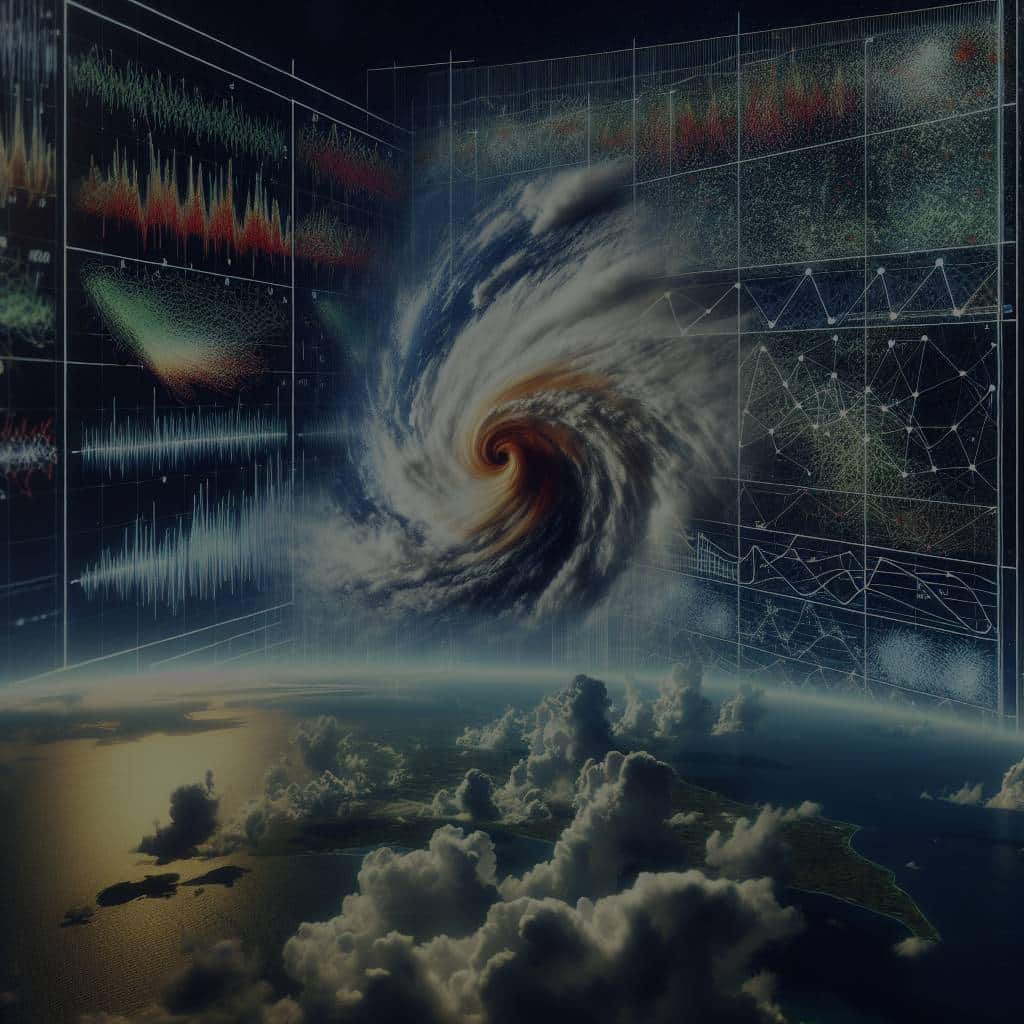How Are AI Algorithms Improving Prediction of Severe Weather Events?

We live in a world increasingly defined by data. Every minute of every day, vast amounts of information are gathered, processed, and analyzed. Among these mountainous volumes of data, one subset stands out due to its importance on human life – weather data. Accurate forecasts can save lives and property by providing ample warning for severe weather events, such as hurricanes, tornadoes, and blizzards. Yet, predicting these occurrences with perfect precision has traditionally been a daunting task. This is where modern technology, machine learning, and artificial intelligence (AI) algorithms step in. They offer promising solutions to improve the accuracy of these predictions.
The Role of Data in Weather Forecasting
Data is the lifeblood of weather forecasting. Various weather stations and satellites scattered across the globe gather millions of data points every second. This data includes information on temperature, humidity, pressure, wind speed, cloud cover, and precipitation levels.
Additional reading : How to Create an Energy-Efficient Home with Smart Technology?
Traditionally, meteorologists have utilized numerical weather prediction (NWP) models to forecast weather. These models take in current weather data and apply physical equations that describe the atmosphere’s behavior to predict its future state. However, these models have limitations. They struggle to accurately capture small-scale and local features of weather, such as thunderstorms or tornadoes.
In recent years, machine learning has emerged as a powerful tool that can harness the full potential of the vast amounts of weather data. Machine learning, a subset of AI, is a method of data analysis that automates analytical model building. It allows computers to learn from data and make accurate predictions without being specifically programmed to do so.
Also to discover : What Is the Role of Wearable Tech in Preventing Occupational Injuries?
How Machine Learning Improves Weather Forecasts
Machine learning thrives on large, complex datasets – the kind that weather prediction entails. Instead of relying on physical equations, machine learning algorithms detect patterns in historical weather data. By learning from these patterns, they can make predictions about future weather events.
Machine learning models can process and learn from more data than any human could. They can digest many variables at a time and identify relationships between them that would be too complex for a human to discern. This makes them particularly useful for predicting severe weather events.
These algorithms are becoming increasingly sophisticated as well. More advanced machine learning techniques, such as deep learning, are capable of recognizing even more intricate patterns in the data. Deep learning models, inspired by the human brain’s structure, can learn from vast amounts of data and make highly accurate predictions.
The Impact of AI on Climate Change Predictions
Climate change is a pressing issue that impacts all aspects of life on earth. Predicting its effects accurately is crucial for planning and mitigation efforts. AI algorithms are playing an increasingly important role in these predictions.
Just as machine learning algorithms can learn patterns in weather data, they can also learn patterns in climate data. This includes not only temperature, precipitation, and other weather variables but also data on greenhouse gas emissions, land use changes, and more. By processing this data, machine learning models can identify patterns that indicate future climate change trends.
These predictions can be more accurate and detailed than those made by traditional methods. They can provide insights into how climate change will impact specific regions, which can guide policy decisions and resource allocation.
The Future of Weather and Climate Predictions
As technology continues to advance, so too will the accuracy and detail of weather and climate predictions. Machine learning and AI have already made significant strides in improving forecast accuracy, and their potential is far from exhausted.
Researchers are continually developing more sophisticated models that can incorporate more data and recognize more complex patterns. These models will not only predict weather events more accurately but also give a more detailed picture of these events. For example, they might predict not only when and where a hurricane will hit, but also its likely intensity and the potential for associated events like flooding or landslides.
The field of AI and machine learning is rapidly evolving, and the coming years are likely to bring even more advances. As these technologies continue to mature and become more integrated into our weather prediction systems, we can expect to see even more accurate and detailed forecasts. This will help us better prepare for and respond to severe weather events, potentially saving lives and minimizing property damage.
Despite these advancements, it is essential to remember that no forecast is ever 100% accurate. The atmosphere is a complex and chaotic system, and there will always be some degree of uncertainty in any prediction. However, with the help of AI and machine learning, we can reduce this uncertainty and make more informed decisions about the future.
Real-Time Weather Monitoring with AI
Emerging as one of the essential applications of AI in meteorology is real-time weather monitoring. By coupling vast amounts of data from weather stations with machine learning algorithms, real-time weather monitoring can offer early warning of severe weather events and potential emergencies.
Real-time weather monitoring employs advanced AI algorithms to process and analyze weather data in real-time. This includes data from weather satellites, radar systems, weather buoys, and other sensors spread across the globe. Machine learning algorithms then analyze this data, identifying patterns and making predictions about imminent weather events. This process happens in mere seconds, providing critical early warnings that can save lives and protect property.
The power of AI in real-time weather monitoring lies in its ability to process the enormous amounts of data quickly and accurately. Machine learning models can digest large volumes of data, pinpointing critical weather patterns that might indicate an impending weather event. Furthermore, the more data these learning models process, the better they become at making predictions.
Moreover, AI systems can incorporate data from non-traditional sources such as social media or traffic cameras to provide even more accurate forecasts. For instance, a sudden surge in posts about heavy rain or hail in a specific area can alert the system about a developing weather event, leading to faster, more localised warnings.
This real-time monitoring can be particularly useful for predicting and responding to extreme weather events such as tornadoes, hurricanes, and flash floods. These events often develop quickly and can cause extensive damage if communities are not prepared. By providing an early warning, AI can help communities take necessary protective measures and potentially save lives.
Combining AI with Climate Science for Better Future Predictions
While AI and machine learning have significantly improved short-term weather predictions, they also have enormous potential in helping us understand and forecast long-term climate trends. Climate science is a complex field that requires the analysis of vast amounts of data over extended periods. This is where AI comes in.
By processing and learning from historical climate data, AI can help scientists understand how our climate has changed over time and predict how it might change in the future. Machine learning algorithms can identify patterns and trends in the data that might not be apparent to humans.
For instance, they can process data on greenhouse gas emissions, ocean temperatures, and ice cover over decades or even centuries. By analyzing this data, they can learn how these variables have influenced climate trends in the past and make predictions about how they might do so in the future.
Combining AI with climate science also allows researchers to run complex simulations to predict the effects of climate change. For instance, they can model how rising sea levels might impact coastal cities or how changing rainfall patterns might affect agriculture.
In conclusion, artificial intelligence and machine learning are transforming the way we predict weather and climate trends. By processing vast amounts of data in real-time, they provide accurate and timely forecasts that help us prepare for severe weather events. Furthermore, by analyzing historical climate data, they help us understand and predict the long-term impacts of climate change.
While there are certainly challenges and limitations to these technologies, their potential in meteorology and climate science is undeniable. As these technologies continue to develop, we can expect to see even more accurate and detailed forecasts in the future. And although no weather prediction can ever be 100% accurate, every improvement brings us one step closer to better understanding our planet and preparing for the future. We must remember that our best tool in combating extreme weather events and climate change is knowledge, and AI is proving to be an invaluable ally in gaining that knowledge.
